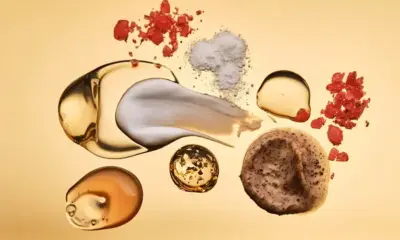Policy & Regulation
India Sets Anti-Dumping Duties on Cosmetic Chemical Imports to Support Local Industry

Understanding India Cosmetic Import Duties and Their Industry Impact
India has recently enacted significant changes in trade policy by introducing anti-dumping tariffs specifically affecting the cosmetics and chemicals industries.
These new India Cosmetic Import Duties focus on vitamin A palmitate and insoluble sulfur—two crucial compounds widely used in cosmetic manufacturing.
Why India Enforced Anti-Dumping Measures
The Indian government responded after domestic producers struggled against low-cost imports undercutting their market share and reducing their profitability.
The Directorate General of Trade Remedies (DGTR) conducted a thorough investigation and confirmed the presence of unfair pricing practices from foreign suppliers.
Consequently, the Ministry of Finance issued new regulations imposing five-year tariffs to stabilize the industry and support local manufacturers.
Although vitamin A palmitate is used in small quantities, it plays a vital role in many skincare and anti-aging formulations.
Moreover, insoluble sulfur supports cosmetic packaging and sealing applications, making these tariffs highly relevant to product developers and suppliers.
New India Cosmetic Import Duties by Country and Exporter
The structure of the India Cosmetic Import Duties varies depending on the country of origin and the exporting company’s cooperation during investigations.
China faces the highest rate, at US$20.87 per kilogram, except for Shangyu NHU BioChem, which secured a lower US$14.95 rate.
Swiss exporters face lower tariffs overall. For example, DSM Nutritional Products pays only US$0.87 per kilogram due to fair pricing practices.
Other Swiss firms face US$8.20 per kilogram, while EU exports attract a flat duty of US$11.09 per kilogram across all exporters.
For insoluble sulfur, Chinese exporters face a US$307 per metric ton (MT) duty, while Japanese firms face varying rates based on transparency.
Japan’s Shikoku Chemicals pays US$259 per MT, but other Japanese exporters must pay as much as US$358 per MT in penalties.
Industry Reactions and Broader Implications
Indian pharmaceutical and cosmetics manufacturers welcomed the tariffs as a step toward creating a fairer marketplace for domestic producers.
However, companies that depend on high-quality imports from Switzerland or China now face rising costs and potential disruptions in production schedules.
Trade experts believe these duties reflect India’s evolving trade policy, which increasingly uses WTO-compliant tools to protect national manufacturing interests.
While costs may rise slightly, many believe the impact on end-product pricing will remain manageable due to minimal formulation usage quantities.
Still, others warn that these measures could influence multiple industries, including packaging, tires, and automotive sectors using insoluble sulfur.
Strategic Takeaways for Cosmetic Importers
Businesses involved in formulation, packaging, or sourcing now need to reevaluate procurement strategies in light of the new import regulations.
Importers must stay updated on tariff enforcement dates and verify duty rates based on product origin and declared suppliers.
It is also crucial for procurement teams to consider domestic alternatives or negotiate favorable pricing contracts with overseas partners.
Furthermore, legal compliance and customs documentation must align with tariff regulations, calculated in Indian rupees at prevailing exchange rates.
India’s Trade Direction and Market Forecast
Experts view this policy as an indicator of India’s increasing assertiveness in global trade, aiming to strengthen its industrial base.
As the world’s fastest-growing beauty and personal care market, India wants to balance open markets with robust local industry support.
Companies that adapt quickly and align with India’s policies will likely gain a competitive advantage in this shifting business landscape.
Final Thoughts on India Cosmetic Import Duties
While these changes bring new costs and complexities, they also create long-term opportunities for growth, innovation, and domestic investment.
Explore more news on this website for updates on trade policy, beauty industry insights, and strategic business solutions tailored to your needs.




















